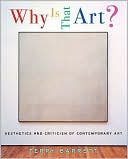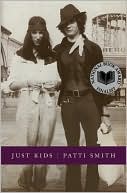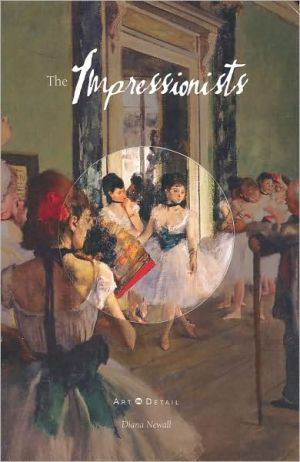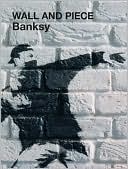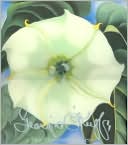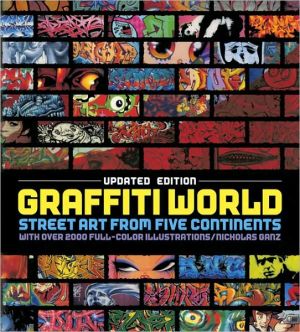Why Is That Art?: Aesthetics and Criticism of Contemporary Art
Search in google:
Why Is That Art? addresses common questions that viewers raise about contemporary art: Why is that art? Why is it in an art museum? Who says it's art? If I did this, would it be art? Why is it good? Covering a broad, diverse, and engaging sampling of works—abstract and representational painting, monumental sculpture, performance art, video installations, films, and photographs—author Terry Barrett responds to these questions using three sources: the artists who created the works, philosophers of art, and art critics. Introducing students to a variety of established theories of art, he presents the traditional sets of criteria of Realism, Expressionism, and Formalism, which are in turn updated by recent sources of Poststructuralism. Barrett applies each of these theories to challenging works of contemporary art, pointing out the strengths and weaknesses of each mode of interpretation. He encourages students to consider many criteria when evaluating an artwork, to critically examine judgments made by others, and to make informed judgments of their own. Ideal for courses in aesthetics, art theory, art criticism, and the philosophy of art, Why Is That Art? is organized chronologically according to the history of aesthetics. It features sixty-seven illustrations (twenty-six in a full-color insert), discusses a wide range of American and European artists, and includes an exceptional overview of postmodern pluralism. This unique book will provide students with a newfound appreciation for contemporary art, scholarship, and reasoned argumentation, giving them the confidence to join the fascinating discourse on contemporary art.
Each chapter opens with an Introduction and ends with Questions for Further Reflection and Notes. IllustrationsPrefaceIntroduction1. Artworlds and Definitions: How That Became Art ArtHonorific Definitions of "Art"The Open DefinitionClassificatory DefinitionsAesthetics Art CriticismInterpretation and JudgmentCritics on CriticizingCriticizing CriticismCriticism and AestheticsSkepticism about Art, Aesthetics, and CriticismAesthetics, Art Criticism, and Visual CultureAestheticians, Artists, Critics, and Readers2. Realism: Art Is Realistic, Truthful, and Beautiful A Brief Overview of Realism Plato Works of Art by Jeff KoonsCritical Commentary on Koons's WorkKoons's Thoughts about His Own WorkKitschAristotle Paintings by Alexis RockmanCritical Commentary on Rockman's PaintingsRockman's Thoughts about His Own WorkPhotographs by Andres SerranoCritical Commentary on Serrano's PhotographsPornography Obscenity and Censorship Photography, Reality, and Truth What Does It Mean to Say That a Work Is "Realistic"?ConclusionRealism and ArtistsRealism and ArtworksRealism and Audiences3. Expressionism and Cognitivism: Art Shows Feelings, Communicates Thoughts, and Provides Knowledge Expressionism and CognitivismExpressionist and Cognitivist Theories of ArtLeo TolstoyBenedetto CroceR. G. CollingwoodSuzanne LangerJohn DeweyNelson GoodmanArthur DantoMetaphor Psychoanalytic Theory Marxist Aesthetics Joan Mitchell, PainterCritical Commentary on Mitchell's PaintingsMitchell's Thoughts about Her Own WorkMitchell and ExpressionismLouise Bourgeois, SculptorCritical Commentary on Bourgeois's SculpturesBourgeois's Thoughts about Her Own WorkBourgeois and ExpressionismKiki Smith, Printmaker and SculptorCritical Commentary on Smith's WorkSmith's Thoughts about Her Own WorkSmith and CognitivismExpressionism and Artistic Intent Limitations of Expressionism and Cognitivism Strengths of Expressionism and Cognitivism ConclusionExpressionism, Cognitivism, and ArtistsExpressionism, Cognitivism, and ArtworksExpressionism, Cognitivism, and Audiences4. Formalism: Art Is Significant Form Precursors to FormalismIs Beauty Objective or Subjective?Early FormalismAesthetic Attitude and Aesthetic ExperienceThe SublimeImmanuel KantG. W. F. HegelTwentieth-Century FormalismEarly Modern Abstractionists Kandinsky, Mondrian, and MalevichClive BellClement GreenbergAgnes Martin: Paintings and DrawingsCritical Commentary on Martin's WorkMartin's Thoughts about Her Own WorkJoel Shapiro: SculpturesCritical Commentary on Shapiro's WorkShapiro's Thoughts about His Own WorkAndy Goldsworthy: Environmental SculpturesCritical Commentary on Goldsworthy's WorkGoldsworthy's Thoughts about His Own WorkMartin, Shapiro, Goldsworthy, and Formalism Strengths and Weaknesses of Formalism ConclusionFormalism and ArtistsFormalism and ArtworksFormalism and Audiences5. Postmodern Pluralism: Art Destabilizes the Good, the True, the Beautiful, and the Self Precursors to Poststructuralism and PostmodernismFriedrich NietzscheCritical Theory, the Frankfurt School, Neo-MarxismStructuralismFerdinand de SaussureRoland BarthesStructuralism and FormalismPoststructuralismJacques LacanMichel FoucaultJulia KristevaJacques DerridaGilles Deleuze and Felix GuattariRichard RortyFeminism PostmodernismJean-Francois LyotardJean BaudrillardFrederic JamesonPostcolonialism Cindy Sherman: PhotographsCritical Commentary on Sherman's PhotographsSherman's Thoughts about Her Own WorkCindy Sherman and Postmodern PluralismLorna Simpson: Photographs with WordsCritical Commentary on Simpson's WorkSimpson's Thoughts about Her Own WorkLorna Simpson and Postmodern PluralismPaul McCarthy: Performances, Videos, and SculpturesCritical Commentary on McCarthy's WorkMcCarthy's Thoughts about His Own WorkMcCarthy and Postmodern PluralismStrengths and Weaknesses of Postmodernist Pluralism ConclusionPostmodern Pluralism and ArtistsPostmodern Pluralism and ArtworksPostmodern Pluralism and Audiences6. Conclusion Why Is Stacked Art?Art by DefinitionsIs Stacked a Good Work of Art?Realist ConsiderationsExpressionist ConsiderationsFormalist ConsiderationsPostmodernist ConsiderationsPurposes of Art Selecting CriteriaA Single Criterion or Multiple Criteria for All Works of ArtBibliographyIndex
